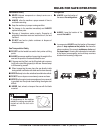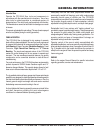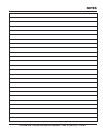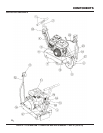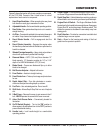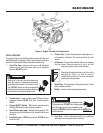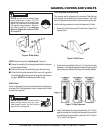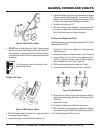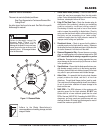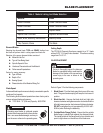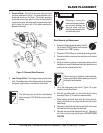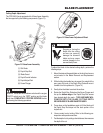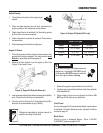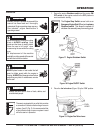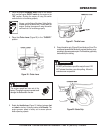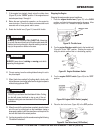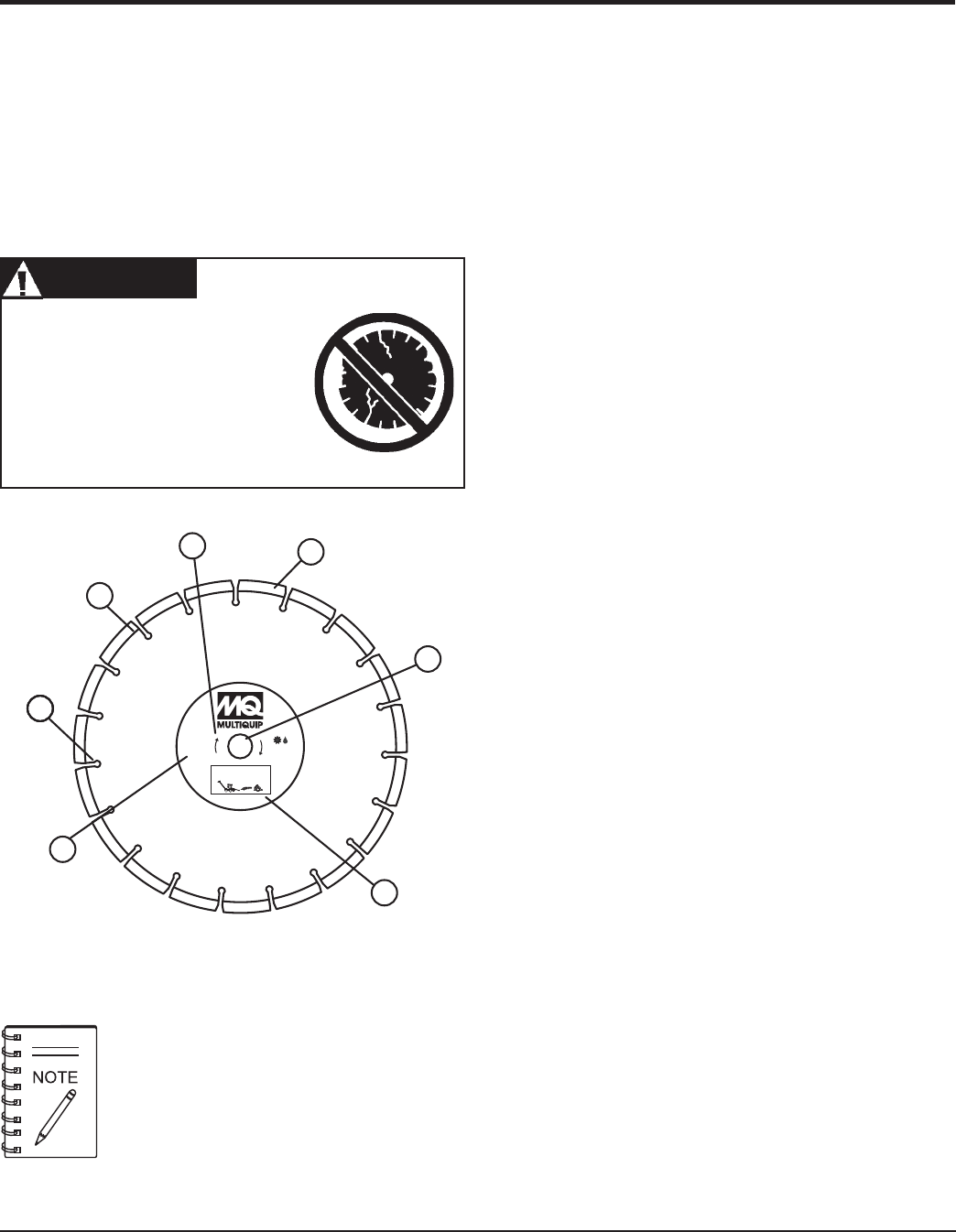
FCG16HA SAW • OPERATION AND PARTS MANUAL — REV. #1 (03/19/10) — PAGE 19
Failure to thoroughly inspect the
diamond blade (Figure 11) for
operational safety could result in
damage to the blade, the saw, and may
cause injury to the user or others in the
operating area. All damaged blades
must be discarded.
Figure 11. Diamond Blade
1. Stress Relief Holes (Gullets) –
Check the steel core for
cracks that may have propagated from the slots and/or
gullets. Cracks indicate extreme fatigue failure and if sawing
continues, catastrophic failure will occur.
2. Edge Of The Steel Core – Check the diameter edge for
discoloration (blue oxidation) indicating an overheating
condition caused by insufficient cooling water/air.
Overheating of blades may lead to loss of core tension
and/or increase the possibility for blade failure. Check to
make sure the steel core’s width is uniform about the rim of
the blade, and not succumbing to an “under cutting”
condition brought about by highly abrasive material or
improper under cutting core protection.
3. Directional Arrow – Check to ensure that the blade is
oriented properly on the blade shaft for sawing. Reference
the directional arrow in the blade and place it so the direction
of rotation “downcuts” with the turn of the shaft.
4. Diamond Segment or Rim – Ensure there are no cracks,
dings, or missing portions of the diamond segment/rim. DO
NOT
use a blade that is missing a segment or a portion
of
the rim
. Damaged and/or missing segments/rims may
cause damage to your saw, and injury to the user or others
in the operating area.
5. Specifications – Ensure that the blade specifications, size,
and diameter properly match up to the sawing operation.
Utilizing a diamond blade not matched properly to the task
may result in poor performance and/or blade damage.
6. Arbor Hole – It is essential that the arbor hole diameter
properly matches the blade, and that it is free from
distortions. Correct blade flanges (collars) must be used.
The inside face of the flanges must be clean & free of debris.
An out of round arbor condition will cause damage to the
blade and the saw.
7. MAX RPM – This RPM reference is the maximum safe
operating speed for the blade selected. DO NOT use
blades rated at a lower rotational speed than the rated
RPM of the saw (6000 RPM). Exceeding the MAX RPM is
dangerous, and may cause poor performance and may
damage the blade. All blades must be designed to meet or
exceed the maximum spindle RPM.
MAX
RPM
6,115
Dry/Wet
Cutting
Model 10PSA
Very Soft Material
1
2
11
3
4
5
6
7
SPECIFIC TOOLS TO BE USED
This saw is to use tools (blades) as follows:
Steel Core Segmented or Continuous Diamond Rim
Cutting Wheel.
Any other type of tool is not to be used. See Table 4 for specific
blade usage for material.
WARNINGWARNING
WARNINGWARNING
WARNING
BLADES
Adhere to the Blade Manufacturer's
recommendations on handling, storage, and safe
usage of blades.



